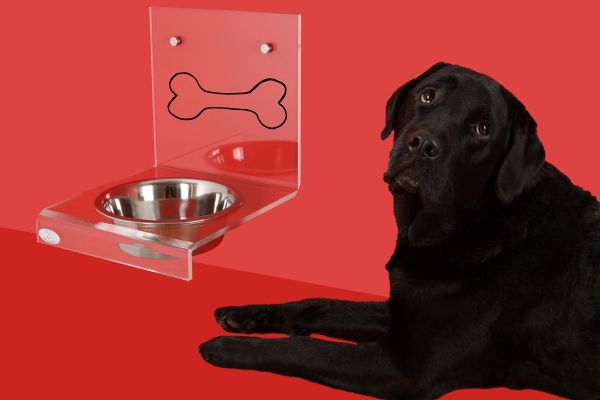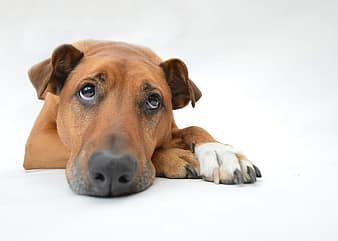How Long Can a Dog Live Without Food? Your dog can go a few days without food, as long as he is still drinking plenty of water. Seeing your pet get sick can put you through the emotional wringer. But it’s important to remember that loss of appetite can occur for multiple reasons. You don’t need to rush your dog to the vet as soon as you notice he’s lost interest in eating. Wait at least 48 hours to see if the problem gets any better.
How Long Can a Dog Live Without Food?

Health, age, and size are factors that will determine how long a dog can live without food. It can range from five days up to three weeks. The temperature and how active the dog is will also play a role in how long a dog can survive without eating.
What is more important than food is making sure that your dog stays hydrated. The less your dog eats, the more water they should be consuming. Dehydration can cause organ failure and death if not properly treated.
Unless your pet is on a feeding schedule, you might not even realize that they have stopped eating at first. Once you do take notice, it’s hard not to overreact. But, in most cases, you don’t have to worry. There are a few different reasons that your pet might suddenly start to refuse his food. Most of the time, it’s a temporary situation caused by an upset stomach or being a picky eater.
Reasons Why A Dog Would Refuse Food
Like humans, dogs can come down with viruses and colds. When we get sick, there are times when just the thought of food will make our stomach churn. Sometimes, you want to sleep until you feel better. Dogs can be the same way. If they’re dealing with digestive distress like vomiting or diarrhea, trying to eat might make the situation worse.
Other reasons that your dog might have lost his appetite include:
- Upset stomach
- Infection
- Allergies
- Pain from injury or arthritis
- Dental issues
- Parasites
- Autoimmune diseases
- Severe medical illnesses like cancer, diabetes, or organ failure
There’s a Problem With the Food

The food you’re giving your pup might also be an issue. If your pet is turning his nose up at his bowl of kibble, try giving him a fresh serving. The old food might have gotten stale or sour. It’s not usual for your dog to decide he’s tired of the food. Offering a different brand or flavor might be the enticement your pet needs to resume his regular feeding habits.
If your dog has been snacking on treats all day long, you shouldn’t be shocked if he turns his nose up when you set out his dinner bowl. It’s like having to tell your children they can’t have cookies until after dinner, so they don’t spoil their appetite. Reduce how many treats you give him the next day and see if his interest in dog food resumes.
Your Dog is Dealing With Emotional Issues
Not everyone knows this, but pets can suffer anxiety and stress just like humans. When a dog isn’t feeling his best mentally, it can affect his appetite, as well as his behavior. These symptoms are especially true for smaller breeds that are often nervous, or for pets that are new to the home. Dogs thrive on routine, so any changes can cause them to stress out.
My Yorkie likes to display her anxiousness by tearing up everything she can reach any time she’s left home alone. If your dog doesn’t do well with change, find ways to ease your pet into the new situation. And try to have some consistencies your pet can still count on, like a set feeding schedule, or where he eats his meal. Even one small event can help balance your dog’s stress levels.
When Should You Call a Vet?
If you notice your dog suddenly isn’t wanting to eat, don’t panic just yet. Canines can skip eating for a few days without having any problems. For the first 48 hours, observe your pet for any other symptoms they might be experiencing. If you notice that they’re also refusing to drink anything, you should consult a vet.
After 48 hours, if your pet is still not eating and you have tried offering a different kind of food incentive, schedule an appointment with your dog’s doctor. There might be a serious problem going on that needs to be treated. However, if you have a puppy that isn’t eating, you shouldn’t wait for observation. The younger your dog is, the quicker they need to be seen.
Loss of Appetite Due to Dying
None of us like to admit it, but death is a part of life. We all wish that our canine companions could live as long as we do, but that’s not the case. When your pet comes to the end of her life, she may no longer be interested in eating. You can try to offer food and water, but as your dog gets closer to death, they will turn down both.
You may also notice other concerning signs like:
- Lack of interest
- Lethargy or no energy
- Loss of control over bladder and bowel
- Weird breathing
Once you realize your pet is dying, you’ll have to start thinking of your next steps. At this point, some people choose euthanization, which means the animal will be put to sleep using intravenous medicine. Other pet parents prefer to keep their pets at home, where they are safe and comfortable until the end. You should pick the option that works best for you and your family. What matters is that you have a chance to say goodbye.
Observe and Then React
It’s normal to be concerned when you notice a change in your furbaby’s appetite. But you shouldn’t jump to conclusions without having all the facts. It’s important to let some time pass to see if your dog resumes eating on his own. Although you shouldn’t wait longer than 48 hours. Use the time to see if there are any other symptoms. But be sure that you are giving him plenty of water while waiting.

Kassidy Shepperd is the editor in chief for Canine-Prime.com. She is is a dog lover/trainer, a freelance writer and a volunteer at many pet rescue and shelter centers. Kassidy is based in Colorado and regularly writes for dog related magazines and blogs.


